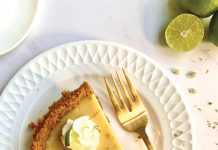
Botanical art is an exacting art form. A successful work not only has to be technically proficient and aesthetically pleasing, it also must be absolutely accurate. So why would an artist choose such a demanding means of expression? Let artist Carol Woodin explain. She’s the organizer of “Wildly Exquisite: Florida’s Native Plants,” on view beginning Jan. 18 at the Preservation Foundation of Palm Beach.
“The variety of plants is endless,” she said. “There are really hundreds of thousands of things out there to paint and there’s always something new to find.”
Visitors might make similar discoveries when they tour the exhibition, which features 34 artworks by 29 members of the American Society of Botanical Artists. The exhibition might nudge viewers “to see that there is beauty within these species of plants that are not always perceived as being beautiful,” said Amanda Skier, the foundation’s executive director.
As Woodin said about the maypop, “it’s so interesting to look at.” It’s also a host plant for longwing butterflies. Woodin can’t grow passion flowers in her garden in the Catskills, because it’s too far north. But Florida residents can.

Encouraging the return of native plants to the landscape has become an increasingly important part of the foundation’s mission to preserve Palm Beach’s distinctive character. The exhibition presents a case for native plants through a medium that’s popular with many South Florida residents, Skier said.
Foundation horticulturalist Susan Lerner’s captions include information about where the plants grow, how they’ve been used over the centuries and wildlife they sustain. After touring the show guests can go next door to stroll Pan’s Garden, the foundation’s native plant garden. While there they might see a ruby-throated hummingbird sipping on a coral honeysuckle, as it is in Karen Coleman’s colored pencil drawing, as well as many other plants in the exhibition.
The juried show features some of the society’s most accomplished artists.
Jean Emmons is one of the best colorists working in the field today, said Woodin, who is the society’s director of exhibitions. Viewers who look closely at her watercolor of the white-topped pitcher plant will see “a festival of colors,” she said.

Lerner, who was one of the jurors, prefers works that tell a story, such as Wendy Hollender’s colored and watercolor pencil rendition of the elderberry, which features hand-written notes along with images of the plant’s parts and various stages of its growth.
“It shows so much from this tree,” Lerner said. “It’s just an exquisite piece.”
The foundation hopes visitors who haven’t considered gardening with native plants will follow the example of New York-based jewelry designer and foundation patron Mish Tworkowski, who suggested the exhibition. He collects botanical art, cultivates an extensive garden at his home in Millbrook, N.Y., and serves on the board of The New York Botanical Garden, where the American Society of Botanical Artists is based.

Tworkowski and his partner, Joseph Singer, recently bought a home in West Palm Beach. When his landscaper phoned him in New York to say the yard needed be sprayed with pesticide, he was dismayed.
“I called a few of my friends who are good gardeners in Palm Beach and they said, ‘Yup, welcome to Florida landscaping. That’s what everyone does.’”
Instead of following their lead Tworkowski is researching native plants and planning a more Florida-friendly garden.
The works in the show are for sale, with proceeds divided among the artists, the preservation foundation and the American Society of Botanical Artists. The exhibition will be on view through April 2.










Facebook Comments